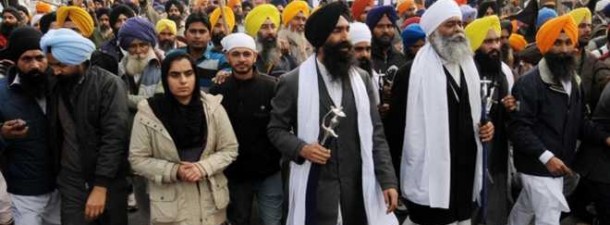In repetition of earlier trends, the Sikhs, as a religious group, have posted the lowest sex ratio indicating a preference for boys and lack of freedom for women to give birth to girls.
After every 1,000 males, Sikhs have only 903 women, the lowest for all religious outfits. Hindus are the next worst on sex ratios with 939 females for every 1,000 males; Jains with 940; Muslims with 951 and Buddhists with 965. Christians with 1,023 women for every 1,000 men have the best sex ratio, a crucial indicator of women’s empowerment. Sex ratio for the country is 943 with Sikhs and Hindus being the only religious groups posting lower sex ratios than the national average.
India’s Muslim population is growing slower than it had in the previous decades, and its growth rate has slowed more sharply than that of the Hindu population, new Census data show.
The decadal Muslim rate of growth is the lowest it has ever been in India’s history, as it is for all religions.
The data on Population by Religious Communities of Census 2011 show that between 2001 and 2011, Hindu population grew by 16.76 per cent, while that of Muslims by 24.6 per cent. The population of both communities grew faster during the previous decade, at 19.92 per cent and 29.52 per cent, respectively. As a long-term trend, say demographers, the communities’ growth rates are converging.
“This is completely along expected lines, and has been an ongoing process,” P. Arokiasamy, demographer and Professor at the International Institute of Population Sciences, Mumbai, told The Hindu. “With rising education and changing family expectations, declining fertility is an expected demographic phenomenon. It begins among better educated groups with better access to health care — as in India’s southern States — and then other groups catch up and converge,” Dr. Arokiasamy explained. In Kerala, for instance, the Muslim fertility rate (while higher than among the Hindus) is extremely low, especially compared with all communities in the northern States, he said.
The numbers show that the sex ratio among Muslims, already better than among Hindus, has further improved.
The sex ratio among Muslims now stands at 951 females for every 1,000 males, substantially better than 936 in 2001, while among Hindus, it is 939 females for every 1,000 males, a slight improvement over the 2001 value of 931. Assam remains the State with the largest Muslim population as a proportion (34.22 per cent) and saw the largest increase in the Muslim proportion between 2001 and 2011, followed by Uttarakhand and Kerala.







No Comments
Comments for Sikhs report lowest sex ratio are now closed.